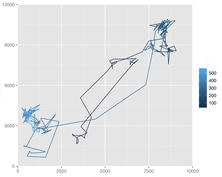Publication trimestrielle du Laboratoire
d'analyse et d'architecture des systèmes du CNRS
More generally, this topic will address the theoretical and computational electromagnetics in order to propose an implementation of informatics tools for the rigorous calculation of electromagnetic scattering inside very large structures or radiation antenna placed near oversized objects. This calculation involves the numerical solution of very large systems inaccessible by traditional resources. The solution will be based on grid computing and supercomputers.Electromagnetic modeling of oversized structures by means of different numerical methods, using new resources (hardware and software) to realize yet more performant calculations, is the aim of this work.The numerical modeling is based on a hybrid approach which combines Transmission-Line Matrix (TLM) and the mode matching methods. The former is applied to homogeneous volumes while the latter is used to describe complex planar structures.In order to accelerate the simulation, a parallel implementation of the TLM algorithm in the context of distributed computing paradigm is proposed. The subdomain of the structure which is discretized upon TLM is divided into several parts called tasks, each one being computed in parallel by different processors. To achieve the job, the tasks communicate between them during the simulation by a message passing library.An extension of the modal approach to various modes has been developped by increasing the complexity of the planar structures. The results prove the benefits of the combined grid computing and hybrid approach to solve electrically large structures, by matching the size of the problem with the number of computing resources used. The study highlights the role of parallelization scheme, cluster versus grid, with respect to the size of the problem and its repartition.Moreover, a prediction model for the computing performances on grid, based on a hybrid approach that combines a historic-based prediction and an application profile-based prediction, has been developped. The predicted values are in good agreement with the measured values. The analysis of the simulation performances has allowed to extract practical rules for the estimation of the required resources for a given problem.Using all these tools, the propagation of the electromagnetic field inside a complex oversized structure such an airplane cabin, has been performed on grid and also on a supercomputer. The advantages and disadvantages of the two environments are discussed





